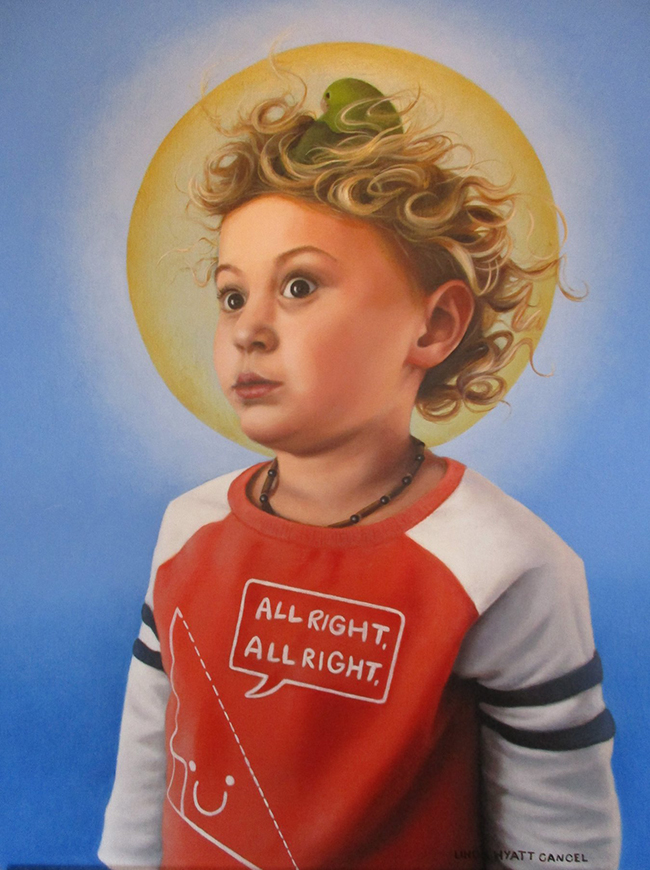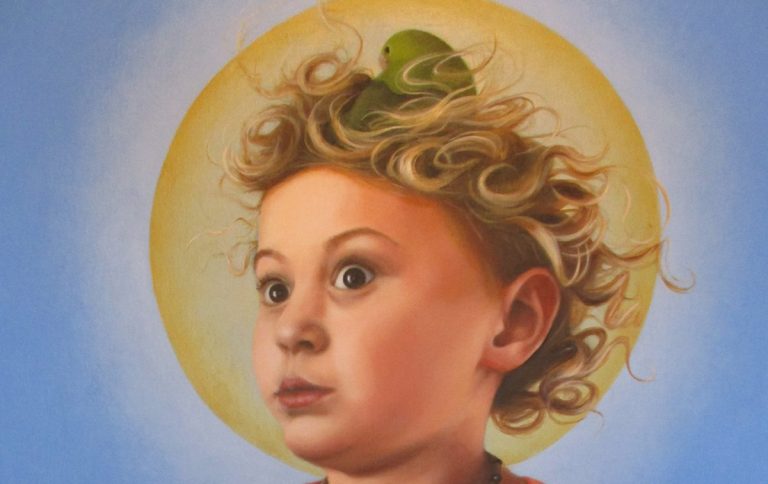Linda Cancel’s artistic journey has been one of deep observation and storytelling. Born in 1959 in Moscow, Idaho, she has always been drawn to the landscapes and shifting light of the Pacific Northwest. One of her earliest memories—fireworks over the Snake River at just fifteen months old—sparked a lifelong fascination with how light interacts with form. At twelve, she began studying oil painting under William F. Pogue, a mentor who introduced her to the techniques and storytelling traditions of the Golden Age of Illustration and the Wyeth family. These early influences shaped her approach, embedding a sense of narrative and atmosphere into her work.
Her formal education at Spokane Falls Community College in Visual Merchandising and Display Design gave her a strong foundation in color theory and composition. More than just a painter, Linda sees herself as an observer of history, geology, and human psychology. Her paintings often function as visual archaeology, layering elements of time, memory, and emotion into the canvas. After 25 years on the East Coast, she returned to the West Coast in 2013, reconnecting with the landscapes that first shaped her artistic path.
The Art of Storytelling in Paint

One of Linda’s most interesting paintings is a portrait of her grandson, Logan, which won Best of Show at the Chewelah Winterfest exhibition two years ago. On the surface, it’s a beautifully rendered realist painting—a moment in time captured with exquisite detail. But there’s more beneath the brushstrokes.
The first thing you notice is Logan’s expression. It’s not a typical posed portrait. There’s something contemplative in his gaze, as if he’s caught in a thought, somewhere between childhood and something bigger. His blue background, cool and soft, provides contrast to the golden halo encircling his head—a subtle but effective way to draw attention to the subject. This halo isn’t just a decorative choice. It adds an almost sacred quality to the painting, reminiscent of Renaissance portraiture, yet entirely modern in its execution.
Logan’s shirt—a red and white tee with the phrase “All right. All right.”—brings a casual, contemporary element into the mix. It grounds the portrait in the present, balancing the more ethereal elements with something immediate and familiar. The color palette is carefully considered. The yellow halo glows warmly against the blue, while the red in the shirt adds a pop of energy without overpowering the scene.
Then, there’s the detail that makes the painting truly fascinating. At first glance, Logan’s head is just part of the composition, but on closer inspection, a small green bird is perched there. It’s subtle, almost hidden, yet once noticed, it changes the entire mood of the piece. The bird introduces a touch of surrealism—an unexpected guest in an otherwise straightforward portrait. It makes you look again, wonder about its meaning, and engage with the painting on a deeper level.
Linda’s ability to merge realism with a sense of mystery is what sets her work apart. Every detail in her paintings feels intentional, yet nothing is forced. She invites the viewer to linger, to discover, and to interpret. Her background in visual merchandising and design is evident in the way she composes her work. She understands how to guide the eye, how to create depth, and how to use color to evoke emotion.
But what makes her art different isn’t just technique. It’s the way she weaves narrative into every piece. The portrait of Logan isn’t just a painting of a boy. It’s a story about childhood, about memory, about the quiet moments that often hold the most significance. The bird, the halo, the expression—all elements that suggest something beyond the visible.
Linda Cancel paints with a sense of curiosity, exploring the intersections of history, psychology, and place. Whether she’s capturing a landscape or a loved one, her work is always about more than what meets the eye. It’s about the layers of experience, the stories hidden within the brushstrokes, and the moments that stay with us long after we’ve looked away.

